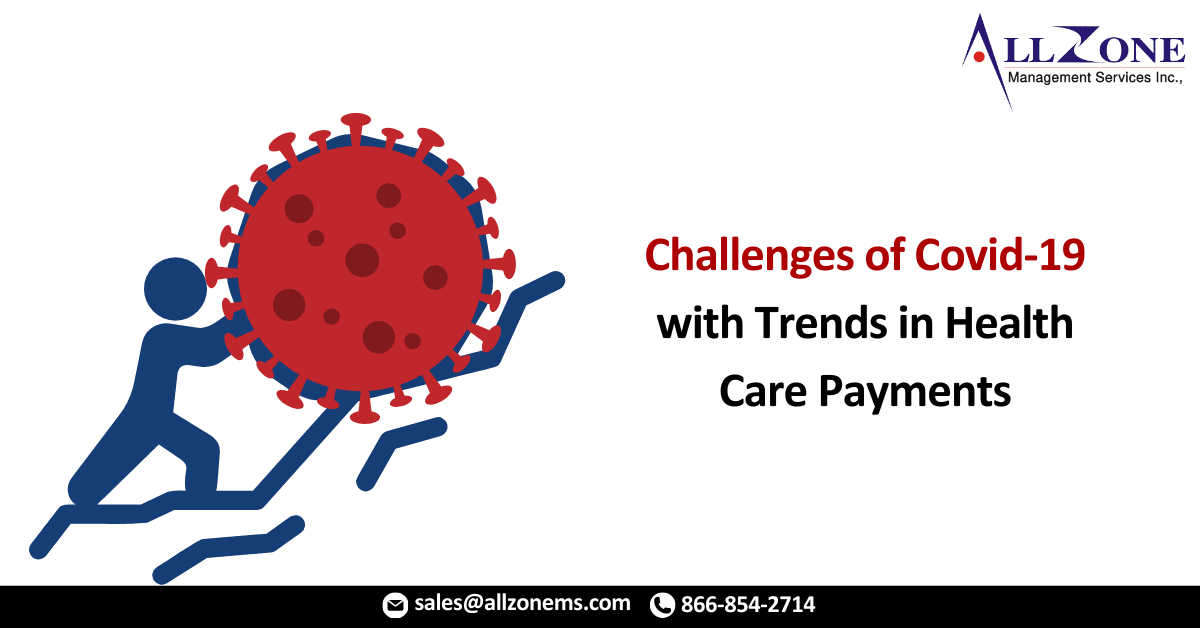Every year, the Trends in Healthcare Payments Annual Report is distributed to start a conversation about the current state of the industry and shine a light on areas where change is needed. For healthcare providers, the report has consistently found that more of their revenue is dependent on out-of-pocket payments from consumers and less is covered by payers. The data also showed slow progress made by providers in adapting to these changes in how they got paid.
The recently-released tenth report finds that providers are still struggling to adapt to consistently and successfully collecting from patients. Providers have not universally embraced the digital payment options that consumers overwhelmingly demand and still depend on outdated paper-based processes for healthcare payments. Providers no longer have the luxury of waiting to see how trends in healthcare payments play out as they did when the first report was published. The long-term impacts of COVID-19 are predicted to bring additional spotlight to eradicating manual, paper-based, human-dependent approaches to payments.
Adapting to a New Normal Presented by COVID-19
Stay-at-home orders and social distancing guidelines due to the COVID-19 pandemic have changed business as usual for most organizations. Before 2020, rapid tech adoption was leveraged to connect us for entertainment, like Instagram reaching 100 million active users in two years or Fortnite hitting 100 million monthly active users in 18 months (Mary Meeker). Technology is now a vital tool that connects us for everything, proven by the rapid adoption of platforms like Zoom, which went from 10 million to 200 million daily meeting participants in three months (Mary Meeker).
Provider organizations, in particular, have found that digital connections with consumers are no longer a “nice-to-have” tool. After decades of limited adoption, more providers are turning to virtual options for connecting with consumers. According to a recent Medical Economics survey, 83% of providers increased telehealth to treat consumers during the COVID-19 pandemic. This new normal created by the COVID-19 pandemic has the potential to integrate virtual options for patient encounters.
Existing Digital Demand Not Matched by Reality
Prior to the COVID-19 pandemic, many healthcare providers managed to avoid the digital revolution that many consumers now embrace. Existing digital options such as a standalone provider portal with limited payment functionality only scratch the surface of the payment experience that consumers expect. In fact, 77% of consumers want to enroll in eStatements from providers, yet only 23% of consumers receive eStatements (InstaMed Consumer Healthcare Payments Survey 2019).
This gap is especially evident for younger generations that have been inundated with digital since their youth. The demand for eStatements is almost universal among Millennials as 90% of that age group want them (InstaMed Consumer Healthcare Payments Survey 2019). Leveraging with electronic and digital tools, such as eStatements, will be crucial to connect with younger generations and to maintain social distancing guidelines.
The Pain of Outdated Collection Practices
From start to finish, providers are almost entirely dependent on paper for patient encounters. Nowhere is that more clear than collection where 87% of providers leverage paper and manual processes (InstaMed Provider Healthcare Payments Survey 2019). The typical process includes sending paper statements weeks or even months after a patient encounter, which could be why 74% of providers say that it takes more than a month to collect a patient balance (InstaMed Provider Healthcare Payments Survey 2019).
Paper is not just part of patient collections as 91% of providers reported receiving paper checks from one or more payers (InstaMed Provider Healthcare Payments Survey 2019). This is despite significant efforts in the industry, including federally-mandated rules, to increase the adoption of electronic transactions between providers and payers. Electronic transactions are critical to not only streamlining collections, but also reducing costs for providers. The work already done to connect with payers in this way has saved the industry $102 billion already with potential savings of close to $10 billion annually still available for providers (2019 CAQH Index®) .
The Growing Importance of Streamlined Payments
Providers struggle to keep up with increases in patient collections. Yet, they are not universally adopting tools that would eliminate some of the burdens of collections, while increasing their overall payment assurance. Additionally, consumers overwhelmingly prefer streamlined options that increase digital connections:
– 83% of consumers prefer electronic payment methods for medical bills (InstaMed Consumer Healthcare Payments Survey 2019)
– 85% of consumers want to make all of their healthcare payments in one place (InstaMed Consumer Healthcare Payments Survey 2019)
Meanwhile, 66% of consumers are willing to consider switching providers for a better payment experience (InstaMed Consumer Healthcare Payments Survey 2019) which has potentially significant financial impact for provider organizations. The data shows that providers can expect payment experience to play a bigger role in loyalty for younger generations as Millennials and Gen X are 28% more likely than Baby Boomers to consider switching (InstaMed Consumer Healthcare Payments Survey 2019).
The Future for Providers in a COVID-19 World
In the last decade of trends in healthcare payments, providers have continually struggled to adapt to changes presented by increasing consumer payment responsibility. Slow adoption of new technology and streamlined processes seemed to be a recurring theme for providers. The consequences of inaction take the form of bad debt, wasted spending and damages to brand trust and loyalty.
The impacts of the COVID-19 are forcing providers to rethink all the options to connect with consumers as the recent growth telehealth has shown. Providers must extend that mindset to collections as well with the operational restrictions due to stay-at-home orders and social distancing keeping many from processing human-dependent and paper-based payments. Even as the pandemic subsides in the future, organizations will continue to benefit from the savings and increased payments realized from streamlined payments.
For More Information: https://www.medicaleconomics.com/news/adapting-challenges-covid-19-trends-health-care-payments

